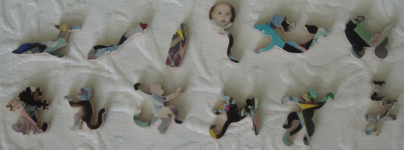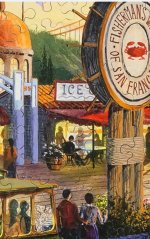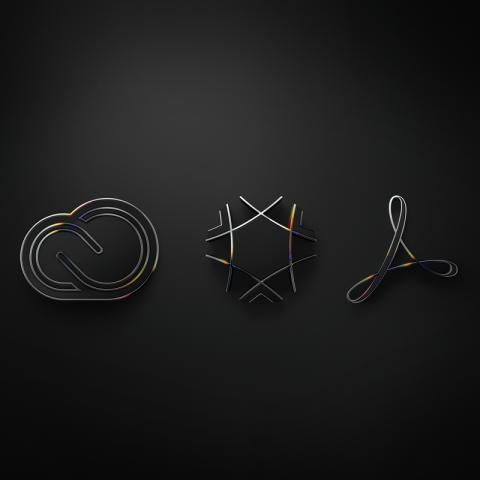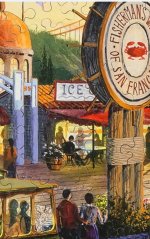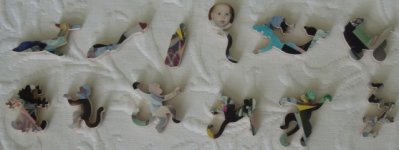- Messages
- 58
- Name
- Cynthia Moore
- Edit My Images
- Yes
We have several high-end wooden jigsaw puzzles made by Stave in Vermont. One of the clever features of their puzzles is the silhouettes. These are puzzle pieces cut in special shapes that add meaning to the puzzle. For instance, a puzzle for one of the grandkids that played baseball, has pieces in the shape of a kid throwing a ball, swinging a bat, etc. There are also interacting pieces, such as a mother rocking a baby where the three pieces are the rocking chair, the mother, and the baby that all fit together. In one of the puzzles that has a picture of one of the grandkids with flaming red hair and freckles, the puzzle has this old Irish saying in individual letter pieces around the face: A face without freckles is a like a night without stars. And most of the larger puzzles will have a rebus made of 5-6 pieces.
Here's one example of some of the silhouettes from one puzzle.
And here are some of the interacting pieces.
Is there a software program that I can get that, given a hi-res photo of a completed puzzle, can first identify the individual pieces by following the cut lines, then allow me to selectively “delete” individual (non-silhouette) pieces leaving just the silhouettes exactly as they are in the puzzle?
I am thinking about making an album containing a page or two for each of the puzzles with some background information. I would like one page to be just the silhouettes. I could go through each box, remove the silhouettes, lay them out, and take a photo. This would be difficult, especially for puzzle that have a lot of letters, which several do. One puzzle has about 200 letters. It would be more meaningful if they were in the exact position they are in in the actual puzzle.
Thanks
Here's one example of some of the silhouettes from one puzzle.
And here are some of the interacting pieces.
Is there a software program that I can get that, given a hi-res photo of a completed puzzle, can first identify the individual pieces by following the cut lines, then allow me to selectively “delete” individual (non-silhouette) pieces leaving just the silhouettes exactly as they are in the puzzle?
I am thinking about making an album containing a page or two for each of the puzzles with some background information. I would like one page to be just the silhouettes. I could go through each box, remove the silhouettes, lay them out, and take a photo. This would be difficult, especially for puzzle that have a lot of letters, which several do. One puzzle has about 200 letters. It would be more meaningful if they were in the exact position they are in in the actual puzzle.
Thanks


